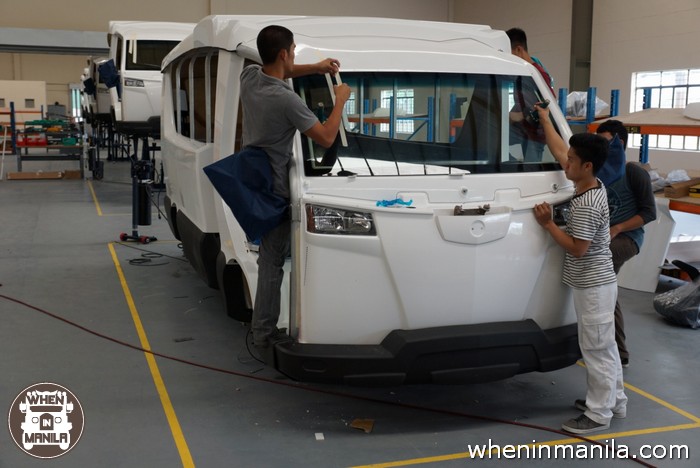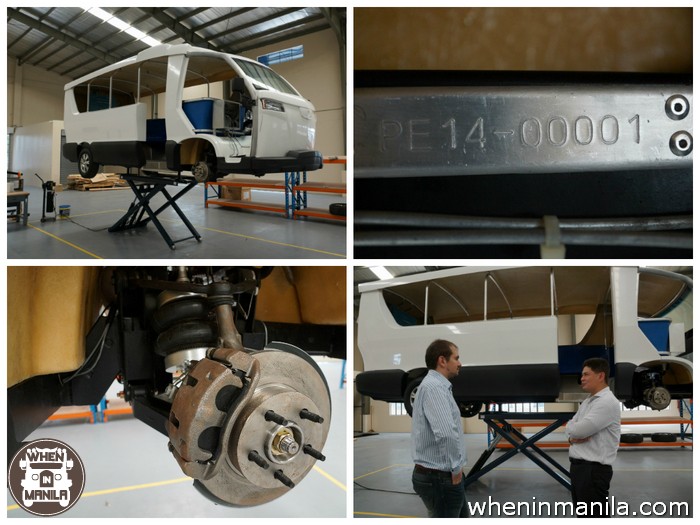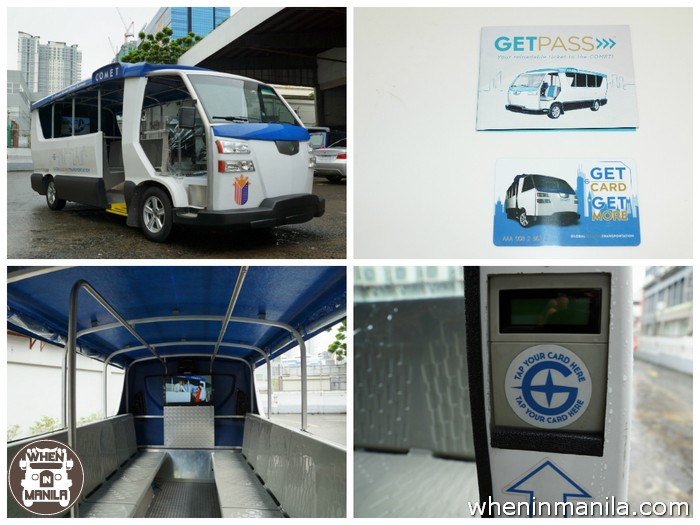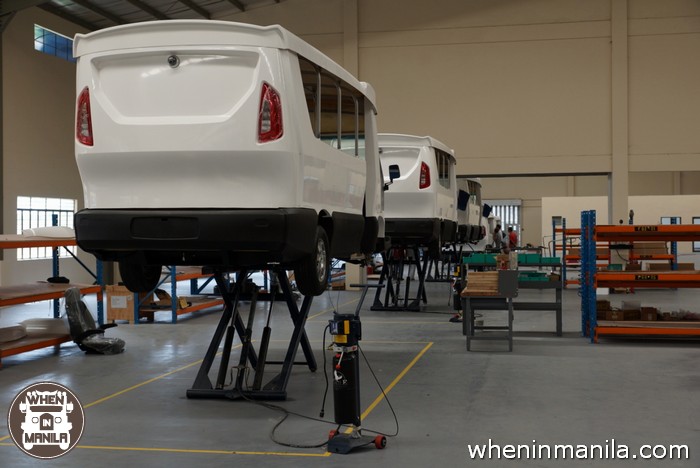Meet The COMET, The Electric Jeepney About To Forever Change The Way You Travel
When President Obama came to the Philippines for a whirlwind visit last April, one of his official stops was a photo-op aboard a new electric Jeepney called the COMET, short for City Optimized Managed Electric Transport. Until then, few people outside the transport industry had heard of this vehicle and the Filipino-American company behind it. That all changed in this one moment, but the vehicle used at the time was a prototype and no COMETS were ready to roam the streets of the Metro yet. A few months have passed since then and the COMET is now entering mass production. It will soon be plying the roads of the big city in its mission to eventually replace the Diesel-burning Jeepney as we know it. Read on to learn how this vehicle and the people behind it will forever change the way you travel on the streets of Manila!
WhenInManila was the first publication to be given access to the factory’s assembly line in Carmona and the images accompanying this article, taken during a tour of the plant with GET president Sigfrido R. Tinga, are an exclusive first look at the very place where the silent transport revolution is currently being put together. The facility is still being finalized to soon allow for the assembly of the vehicle on multiple production lines, so what you see here is the beginning of something truly big. The first six production vehicles are being completed at the moment, including number 00001, the first ever production car which, as legend has it, was signed by the whole team in a hidden location at the back of one of the body panels. Eventually, thousands of COMETs will be assembled here.
The COMET is much more than just a straight-forward replacement for the current Jeepney. It’s a game changer, a complete rethink, and a massive improvement on the current public transport situation. The company behind it is called Global Electric Transport (GET), and is a partnership between American and Filipino private investors.
GET decided to not just sell the vehicle in the traditional way Jeepneys are sold at the moment, but to instead create a complete ecosystem around it that provides a total mobility solution. They call this the GETMO, or GET Mobility Optimization, and it includes key points such as a cashless fare system, centralized fleet management, driver management and training, route planning and a designated infrastructure to support the fleet, as well as a crowdfunded business model to get it all going.
All COMETS feature built-in CCTV cameras for passenger safety, onboard Wi-Fi, and are monitored from a central command station at all times. As the route franchise is regulated by LTO and LTFRB, the price for a ride is exactly the same as it is for a Jeepney now but instead of handing your fare to the driver in cash, in future passengers will use a reloadable contact card called the GET Pass. Passengers just need to reload their cards at authorized load centers or agents and then tap in when they enter the COMET and tap out when they exit so their fare can be deducted accordingly. The cards can be loaded with as little as 20 pesos, and as long as users register them with the company will also provide a level of protection in case of loss or theft. GET calls this cashless fare system TITO (Tap in Tap out) and I have a feeling this name will stick. London has Oyster, Hong Kong has Octopus, and Manila has the TITO Card. You heard it here first!
While the aim of GET and its American partner Pangea Motors is to ultimately run a profitable company, social aspects are also high up on the agenda. Next to creating jobs in the factory and within the ecosystem of the vehicle, a lot of consideration has also been given to one of the key people in this whole equation: the driver. A special drop and replace program will be introduced, so that drivers can afford to replace their old Jeepneys with a COMET, and a training program has been developed in partnership with Gawad Kalinga Accredited Worker’s Association (GAWA) to ensure that high standards in terms of operational efficiency and safety can be achieved. Drivers will also earn basic salaries with bonuses plus benefits, meaning no more unsafe drive-til-you-drop practices, and no more wildly stopping anywhere either: the COMET operates with its own network of dedicated stops, to be installed along the routes of the vehicles. This may take a little bit of getting used to, but will ultimately make for a more efficient system and less congestion on the roads.
The vehicle itself is fully electric and the Lithium Ion batteries are encased in a water tight casing to protect them from rain and flooding. A full charge on a 220 volt outlet with 30 amperes will take about five hours and is enough to carry at least 18 passengers up to 100 kilometers. Fast chargers will also be deployed to cut down on the time needed to refuel, and regenerative braking is being utilized to recoup some of the electric juice. A full charge is estimated to cost PHP 400-500 compared to a PHP 1000 diesel load on the same range and the COMET is electronically limited to 60kph for safety reasons.
So what about the electricity for the batteries then, you might ask? The common argument here is that the juice needed to power the COMET is generated by burning coal in big, dirty powerplants. That is of course true to a degree, but the over-all environmental balance is still very much in favor of the electric vehicle. It takes less energy to build and less energy to run it, too. Apart from that, there is always the option to use renewable energy to power it. The biggest benefit of having electric vehicles on the road is without a doubt the huge reduction in air pollution, and with it a reduction in associated risks and illnesses.
Some people will now say that the original Jeepney is part of the country’s heritage and that this iconic vehicle should be kept running in its current form for many years to come, but this sort of thinking is flawed. The Spitfire was an iconic plane, the Model T was an iconic car and the old Routemaster was an iconic bus, but all of them had their day and nobody in their right mind would want to bring them back for everyday use. Times are changing and the time is right for the smoke-belching, road-hogging Jeepney in its current form to join that list of classic but obsolete icons of transportation.
The task ahead for GET and Pangea is a monumental one, but progress is already being made. The biggest challenge is to get as many COMETS as possible on the road, and GET is partnering with Jeepney associations for successful adoption. The country’s leading transport group, Pasang Masda under their national president Obet Martin, has already forged an agreement with GET to purchase 10,000 COMETs to replace existing passenger Jeepneys in three years, plying specific routes in Metro Manila. The goal in five years is to have 20,000 or more vehicles on the road, and to also expand the program throughout the country and ultimately to other countries as well.
This then has all the hallmarks of a once-in-a-lifetime transport revolution and I encourage everyone to go and try the COMET when the first vehicles hit the road later this month.
Global Electric Transportation
https://www.facebook.com/GETPhilippines
Meet The COMET, The Electric Jeepney About To Forever Change The Way You Travel









